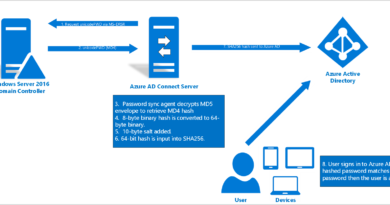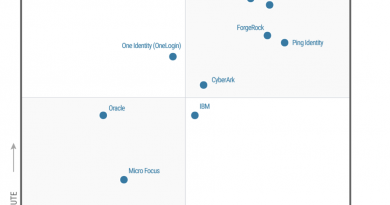Microsoft is recognized as a Leader in the 2021 Forrester Wave for Unified Endpoint Management
Microsoft is honored to be recognized as a Leader in The Forrester Wave™: Unified Endpoint Management (UEM), Q4 2021 report for our ability to help customers on their path to modern endpoint management. Microsoft Endpoint Manager—which brings together Microsoft Intune for cloud endpoint management and Microsoft Endpoint Configuration Manager for endpoints on-premises—empowers organizations to protect their apps and devices across platforms for a resilient, productive workforce.
The Forrester report states that Microsoft “excels at helping customers migrate to modern endpoint management” and that its Desktop Analytics offers capabilities that are among the most advanced in the evaluation for enabling advanced automation alongside the cloud-connected Microsoft Graph API.

Endpoint Manager helps maximize the investments organizations have made in their digital estate through capabilities designed to optimize employee experiences on devices that have become their new workplace for today’s hybrid world. We have worked hard to simplify the path to endpoint cloud management and build capabilities that improve IT productivity as well as mitigate the risk of increasing cybersecurity threats on the expanding endpoint landscape. The Forrester report recognizes that Endpoint Manager continues to grow rapidly with our ability to scale and its inclusion in Microsoft 365.
Insights help boost digital employee experiences
In the new hybrid world, employees around the globe are increasingly dependent on their devices and apps to keep them connected. We have seen growth in Windows devices under management—up more than 130 percent in the last year. As customers continue to work from home and adapt to the new reality of hybrid work, it’s clear that the endpoint is the new workplace and must be protected and managed. Insights into issues like app health and device boot time that can be addressed remotely by helpdesk or IT teams can improve productivity and reduce frustration. Endpoint analytics in Endpoint Manager brings new capabilities that help with digital employee experiences and has been broadly adopted by our customers for exactly that reason.
Hybrid work accelerates cloud migration
Organizations have been forced to rethink how to enable their workforce to be productive from anywhere, on any device, and that means that the calculus for cloud enablement has also changed. Our approach to cloud enablement keeps customers at the center and meets them where they’re at. We take deliberate measures with Endpoint Manager to approach our customers’ need to maximize their existing investment of their endpoints on-premises. From refreshing our cloud configuration wizard to driving group policies into our settings catalog, we can extend the value of the cloud to co-managed endpoints, and at the same time continue to invest in helping customers move to cloud management at their own pace.
A cross-platform approach offers flexibility
We see customers continue to use both fully managed and unmanaged devices within their enterprises. Whether they adopt work profiles, mobile application management (MAM), device enrollment, or user enrollment, each of these have their place and Endpoint Manager supports customers for all the models. With Endpoint Manager, administrators can decide if they need the validation provided through Conditional Access protected resources at the device or app level. More than 80 percent of Endpoint Manager devices use Conditional Access with Microsoft Azure Active Directory.
At Microsoft Ignite 2021, we announced that we will soon introduce Linux to the platforms supported in Endpoint Manager. Simply building a management agent for Linux clients isn’t enough. Rather, devices need to be registered, managed, secured, and then they can be used to access Conditional Access protected resources. We are doing this across Microsoft 365 and are seeing a very broad usage of Conditional Access, which is at the very core of our Zero Trust solution. Our product strategy includes adding more capability over time, providing flexibility to check more stats on the device or app, increasing security, and improving productivity—and there’s still so much more to do.
We invite you to read the full Forrester report here.
To learn more about Microsoft Security solutions, visit our website. Bookmark the Security blog to keep up with our expert coverage on security matters. Also, follow us at @MSFTSecurity for the latest news and updates on cybersecurity.
READ MORE HERE



